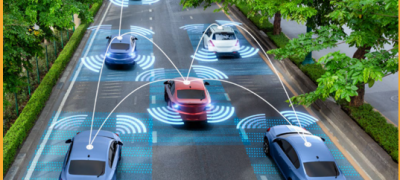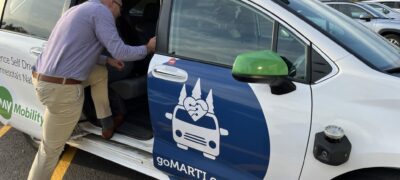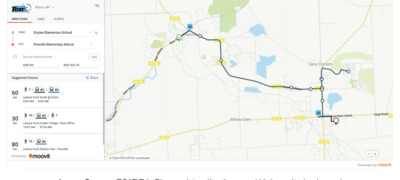Preparing for Automated Vehicles: National and International Approaches
- Date: June 22, 2020
AV 4.0
In January 2020, Secretary of Transportation Elaine Chao released what is commonly referred to as AV 4.0, but officially entitled Ensuring American Leadership in Automated Vehicle Technologies. Like its predecessors, this guidance emphasizes voluntary reporting and development of standards through consensus building.
In June 2020, NHTSA announced the Automated Vehicle Transparency and Engagement for Safe Testing (AV TEST) Initiative, a voluntary initiative to provide an online, public-facing platform for sharing automated driving systems testing activities and other safety-related information with the public.
Coordinating and Ensuring Accessibility
AVs hold enormous potential to promote the independence, economic opportunities, and social well-being of older Americans and persons with disabilities by offering independent mobility for daily activities. Reducing transportation related obstacles enable new employment opportunities for individuals with disabilities and could save billions annually in healthcare expenditures from missed medical appointments. Ensuring that AVs will meet the needs of Americans of all abilities will require carefully thought-out inclusive design to ensure widespread usability and market potential for persons with all types of disabilities-visual, auditory, cognitive, mobility, and others.
AV 4.0 mentions research funded by the US Department of Health and Human Services on interior AV designs that are accessible and that addresses AV solutions to first mile and last mile challenges for people with disabilities. AV 4.0 briefly discusses the role of the US Department of Justice in enforcing the Americans with Disabilities Act (ADA) and the power entrusted to the National Transportation Highway Safety Administration (NHTSA) to “set performance requirements for adaptive motor vehicle equipment and develop exemptions that permit the modification of motor vehicles used by persons with disabilities.” However, in keeping with the previous administration, the discussion never veers from encouragement and possibility to endorsing strategies or imposing requirements for widespread availability of accessible AVs.
International Race
Since 2016, there have been transit AVs operating in regular services in Switzerland and Australia, with many AV transit shuttle pilots in the US. While still few in number and geographic reach, the global competition to develop AVs is fierce and active. The US is a major player, but reasonable minds all over the world are debating incentives for innovation, how to ensure safety and protect privacy, methods for promoting best practices, and the role of laws and regulations.
Beyond Federal Partners
For the tech and automobile industries, AV 4.0 and the AV Test Initiative do not impose compliance requirements, only voluntary assessments. AV 4.0 explicitly leaves cybersecurity leadership to the private sector, while providing federal guidance through NHTSA’s non-binding best practices. Because AVs are not yet widely deployed, how these voluntary practices will fare when tort litigation occurs – and the reasonable person or business standards apply – remains to be seen. Thus far, AV-related crashes have led to quick settlements and not protracted litigation or judicial decisions
Rural and Tribal
The focus of AV 4.0 is on governmental responsibilities, and there is not much that explicitly addresses rural and tribal America. There is a theme of involving stakeholders from all types of communities and ensuring a consistent federal approach for all of them as well.
The International Picture
The UK government structure, legal framework, and standards around private and public transportation are similar to those in the US. Though lacking a memorable title, Automated Vehicles: Consultation Paper 2 on Passenger Services and Public Transport beautifully summarizes the concerns of rural and small urban transit and transportation service providers. And it does so in the context of the ambitious goal of universal AV accessibility.
The Global Guide to Autonomous Vehicles 2020 examines various aspects of infrastructure, planning, and legal developments in many of the leading AV nations, including the US. This includes cellular availability, privacy rights and cybersecurity, and top-down preparation for AVs as part of broader economic planning.
China, for example, has established a national framework for AV permitting and operations, with local governance of taxis and public transportation. Currently, low speed AV shuttles are operating commercially on enclosed campuses. AV taxi licenses are being granted in Shanghai with a graduated system that allows for increasing the number of AVs after six months of good performance.
While the Global Guide offers a comprehensive assessment of China, the US, Germany, the UK, Canada, Australia, and New Zealand, it leaves out some places that are investing heavily in preparation for and encouragement of the AV revolution, such as the United Arab Emirates (particularly the city of Dubai), the city-state of Singapore, Japan and Switzerland.




